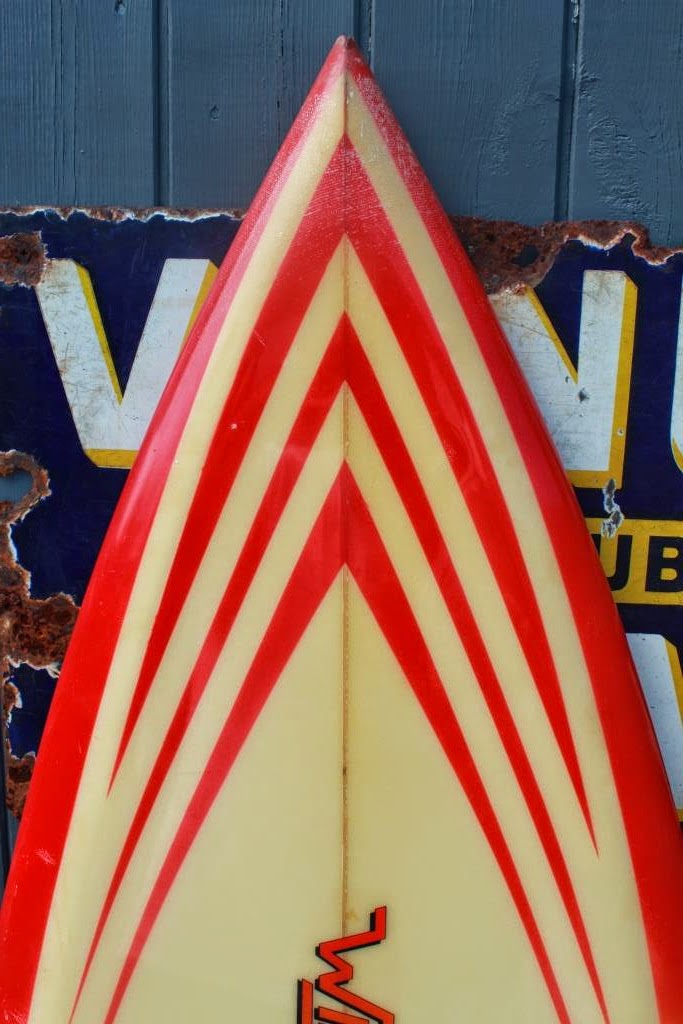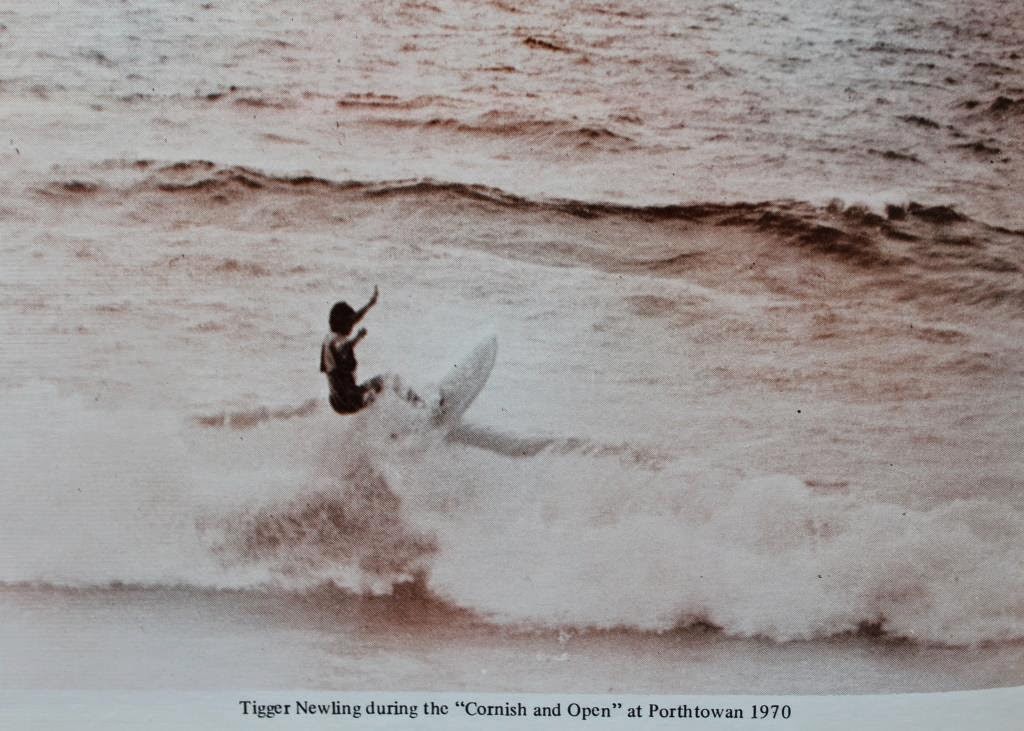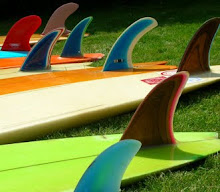Heres a beautiful Bilbo 8'10 owned by Alex, made by Chris Jones. Its wafer thin on the rails and tail and shows cutting edge lightweight design from a very nice era of boards . These boards are very rideable, I was on one last night although mine isnt so thin on the rails. This board has a nicely foiled fin and a good rider of the day would have been able to carve some beautiful turns on this board as well as noseride. It uses one of the older style Bilbo logos and has the CJ monogram at the tail . A cool board.
Tony talks about this era of boards below -
The last of the Malibus
by Tony Cope
After Nat
Young won the `66 Worlds in San Diego,
AUS and the US went their own ways. Undeterred by Nat`s sharp turns
& trims in the pocket which gave him the win even before the final round,
the US ignored his thin & narrow-railed board and made yet more nose
riders. To get that concave scoop below the nose you need a thick board,
thinning it out isn`t an option.
This Oz 1967
shot of the Bells final has in it the genesis of the coming short board
revolution : Nat`s thin board with a long, narrow and raked fin, and Midget`s
board already less than 9` long.
below - Nat's hiding behind his board, but the long narrow fin is showing clearly. Midget's on the rhs with his sub 9 ft longboard.

Fortunately
for GB we could see the way progress was going, imported Oz mags and visiting
surfers and beachguards gave us the full story. Apart from photos I hadn`t actually seen one these boards, but
set about making one in the Groves-Davies shed. It was shaped out of a huge
block of industrial polystyrene & glassed with epoxy, as normal resin melts
styrene, essential information from Bob G. and Bill D.! I was not aware of quite what I`d done until
Bill Bailey saw it on my car roof when Bill Davies and I were collecting some polyurethane blanks at Bilbo. I paid Doug Wilson in the Pargolla works and
found them going over it when I got back to the car. Bailey said Bilbo were
starting to go down the same ` thin and light` road .
below - Riding the board at Kimmeridge. The thin rails, especially in the nose, show up quite well. (Home made wetsuit stuck together with Evostick and with yellow rubber tape reinforcing seams looking quite tidy too !)
Fast
forwarding 47 years to last weekend (!)
: Alex Williams arrived for coffee with a Bilbo on his car, and to my surprise it
was one of those boards made in late `67 or early `68, just before GB went
short-board crazy. This one`s 8 foot
10.5 ins. long by 23.5 ins. wide. The nose and tail are super-thin and quite
sharp-railed, the middle`s a lot thicker but maintains narrow oval rails by
having quite a bit of curve width-ways across both deck and bottom. The fin has
a 10 ins. base then tapers rapidly to became long and narrow – you can see the
Greenough influence clearly.
When you
ride these boards there some surprises . The thin nose cuts into the wave face
rather than riding over it so you need to keep weight back a bit to keep it up,
otherwise it catches. The thin tail cutting into the wave is an advantage if
it`s wide : if it`s narrow the board will
`track` in a line and be hard to turn. The general lightness of my thin
board was a revelation, so easy to ride and so responsive .
below - My own ZIP logo board is tucked under my arm , showing the wide and thin tail , and long narrow fin. On the rhs is Tim Heyland, who wanted to buy it . A year later he joined Dave Aldrich - Smith's Tiki surfboards and is still there today .
bottom - Trying the thin mal out in '67. It turned like a shortboard as long as you kept the nose up. So a year later we all copied Australia, cut another foot out of the centre section, then there was nothing sticking out to catch in the wave face. (photo John Durrant again).
Craig Baird
( SurfWorld museum, Oz ) looked at my photos online last year and wrote “ way
to go Tony “ or something and it was the
only time I`ve ever felt that maybe, a long time ago and just for a nano-second
, I was near the cutting edge of board development !
Thanks Alex,
for the great photos of the Bilbo, and John Durrant for the 1967 black and white shots.
Thanks to Tony as ever for his memories, photos and insights












.jpg)
.jpg)
.jpg)
.jpg)
.jpg)
.jpg)
.jpg)
.jpg)










































